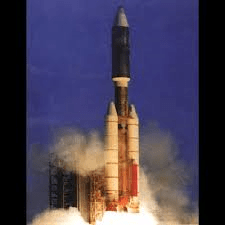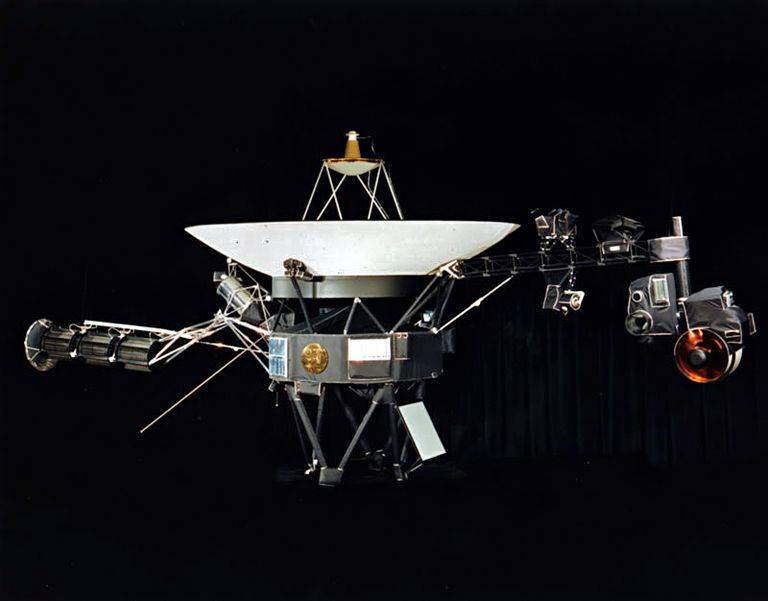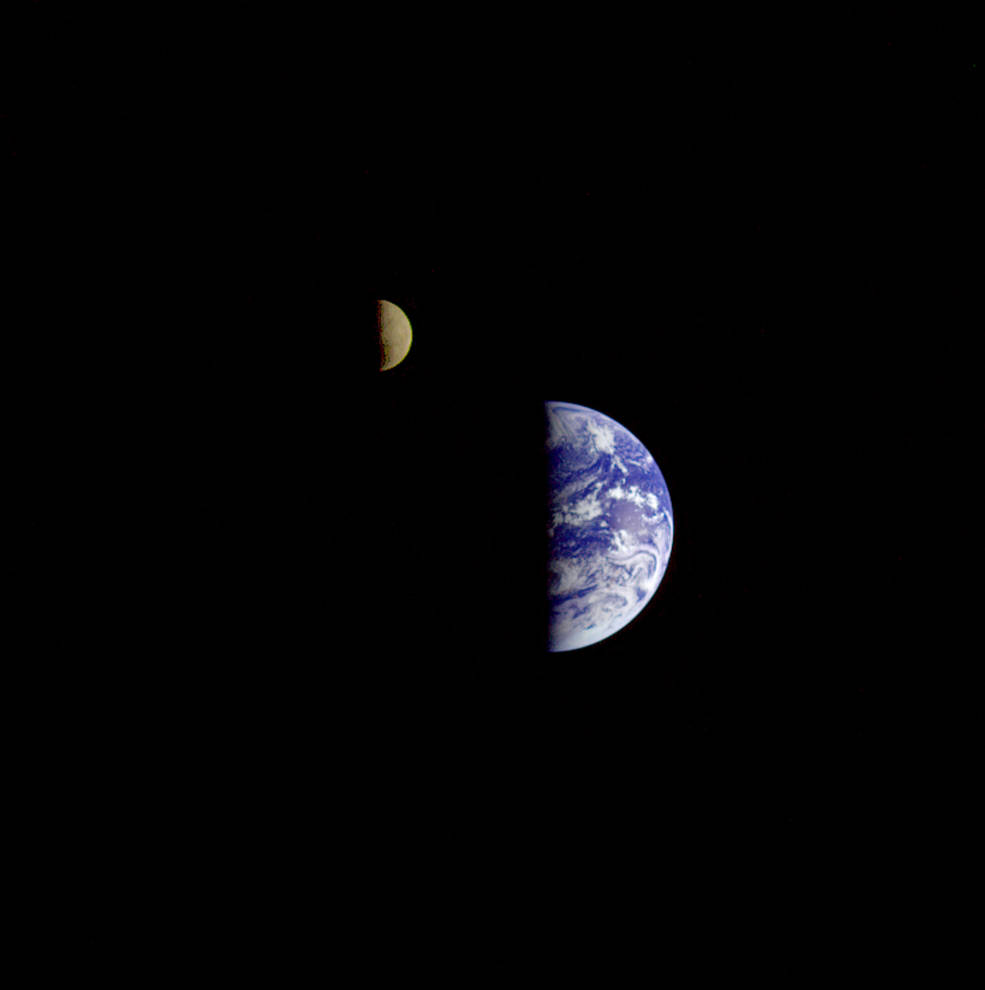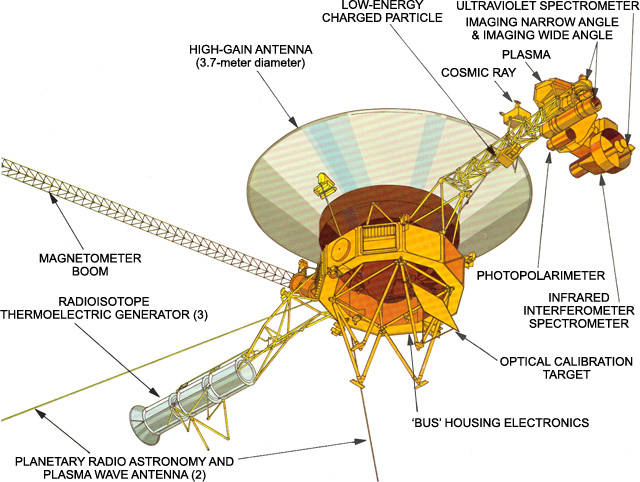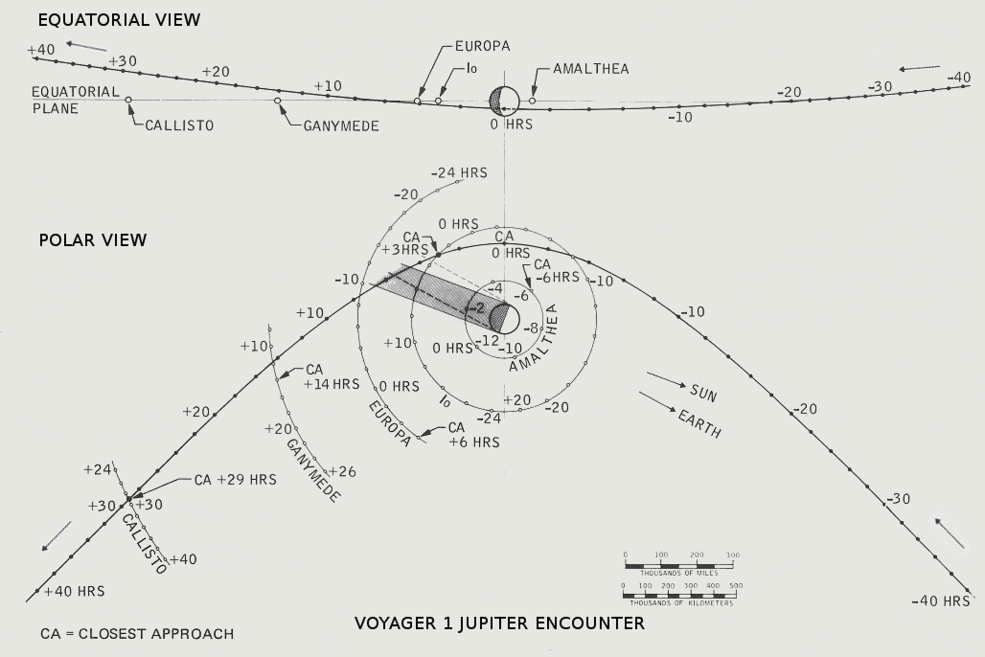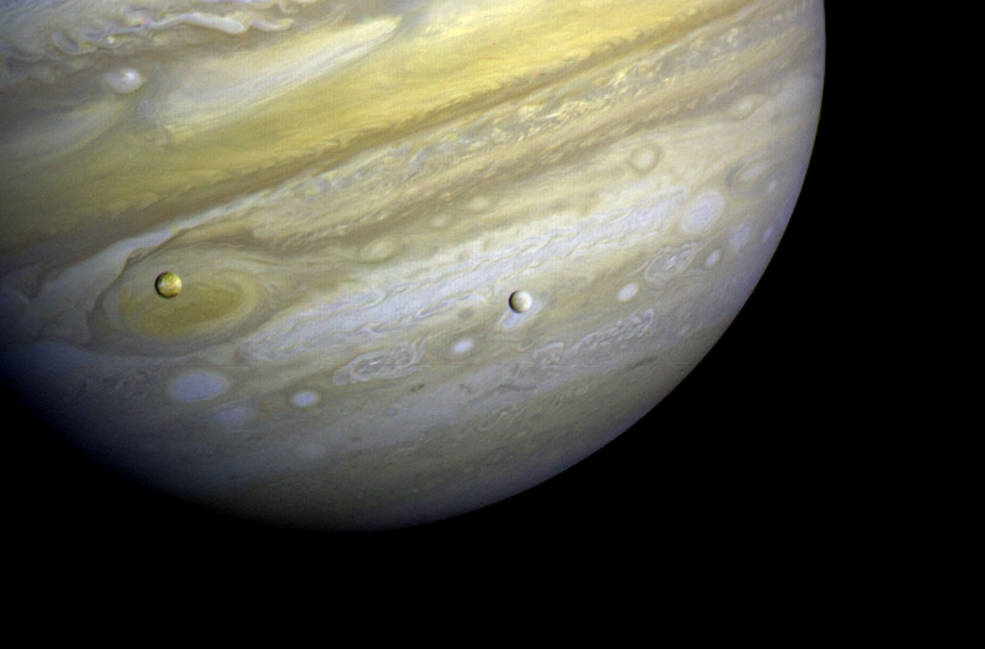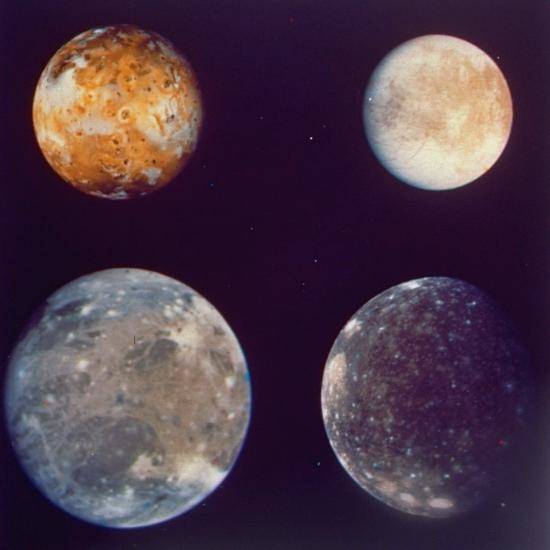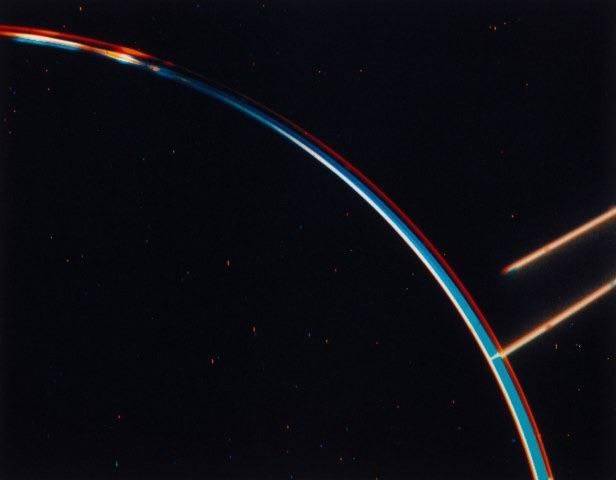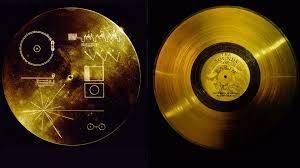Today, Voyager 1 is the most distant spacecraft from Earth, more than 13 billion miles away. Forty years ago, fairly close to the beginning of its incredible journey through and out of our solar system, it was making its closest approach to Jupiter. Although it was not the first to explore the giant planet, Pioneer 10 and 11 completed earlier flybys in 1973 and 1974, respectively, Voyager carried sophisticated instruments to conduct more in-depth investigations. Managed by the Jet Propulsion Laboratory in Pasadena, California, the Voyagers were a pair of spacecraft launched in 1977 to explore the outer planets. Initially targeted only to visit Jupiter and Saturn, Voyager 2 went on to investigate Uranus and Neptune as well, taking advantage of a rare planetary alignment that occurs once every 175 years to use the gravity of one planet to redirect it to the next.
Left: Launch of Voyager 1. Middle: Model of the Voyager spacecraft. Right: The first single-frame image of the
Earth-Moon system, taken by Voyager 1.
The suite of 11 instruments included: an imaging science system consisting of narrow-angle and wide-angle cameras to photograph the planet and its satellites; a radio science system to determine the planet’s physical properties; an infrared interferometer spectrometer to investigate local and global energy balance and atmospheric composition; an ultraviolet spectrometer to measure atmospheric properties; a magnetometer to analyze the planet’s magnetic field and interaction with the solar wind; a plasma spectrometer to investigate microscopic properties of plasma ions; a low energy charged particle device to measure fluxes and distributions of ions; a cosmic ray detection system to determine the origin and behavior of cosmic radiation; a planetary radio astronomy investigation to study radio emissions from Jupiter; a photopolarimeter to measure the planet’s surface composition; and a plasma wave system to study the planet’s magnetosphere.
Left: Schematic of the Voyager spacecraft, illustrating the science experiments. Right: Trajectory of Voyager 1 through the
Jovian system.
Two weeks after its launch from Florida on Sep. 5, 1977, Voyager 1 turned its cameras back toward its home planet and took the first single-frame image of the Earth-Moon system, providing a taste of future discoveries at the outer planets. It successfully crossed the asteroid belt between Dec. 10, 1977, and Sep. 8, 1978. The spacecraft began its encounter phase with the Jovian system on Jan. 6, 1979, sending back its first images and taking the first science measurements. On Mar. 5, still inbound toward the planet, it flew at 262,000 miles of Jupiter’s small inner moon Amalthea, taking the first close-up photograph of that satellite revealing it to be oblong in shape and reddish in color. About five hours later, Voyager 1 made its closest approach to Jupiter, flying within 174,000 miles of the planet’s cloud tops. On the outbound leg of its encounter, it flew by and imaged the large satellites Io (closest approach of 12,800 miles), Europa (456,000 miles), Ganymede (71,300 miles), and Callisto (78,600 miles), all discovered by Italian astronomer Galileo in 1610 using his newly invented telescope. The Voyager images revealed each satellite to have a unique appearance, the most remarkable discovery being an active volcano on Io. Voyager 1 also discovered two previously unknown moons orbiting Jupiter, later named Thebe and Metis. Looking back at Jupiter as it was backlit by the Sun, Voyager 1 discovered that the planet is surrounded by a thin ring. Observations of Jupiter concluded on Apr. 13.
Left: Voyager 1 image of Jupiter and its Great Red Spot, with Io (at left) and Europa transiting in front of the planet.
Right: Composite image of Jupiter’s four large Galilean satellites, shown to scale (clockwise from top left) Io, Europa,
Callisto, and Ganymede.
After its successful exploration of the Jovian system, Voyager 1 sailed on toward Saturn. During its encounter in November 1980, the spacecraft returned a wealth of information about the planet, its spectacular rings and its satellites especially Titan, known to have a dense atmosphere. Saturn’s gravity imparted enough acceleration on Voyager 1 that it achieved escape velocity from the solar system. More than 41 years after its launch, several of the spacecraft’s instruments are still returning useful data about conditions on the very edges of the solar system and even beyond. In August 2012, Voyager 1 crossed the heliopause, the boundary between the heliosphere, the bubble-like region of space created by the Sun, and the interstellar medium. It is expected that Voyager 1 will continue to return data from interstellar space until about 2025. And just in case it may one day be found by an alien intelligence, Voyager 1 and its twin carry gold plated records that contain information about its home planet, including recordings of terrestrial sounds, music and greetings in 55 languages. Instructions on how to play the record are also included.
Left: Voyager 1 took the image of Jupiter backlit by the Sun, and discovered that the planet has a thin ring system.
Right: The gold disc carried by each Voyager.



























